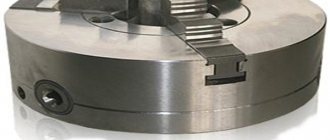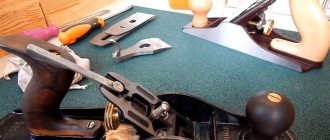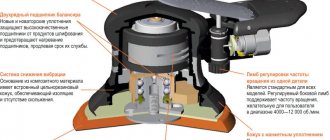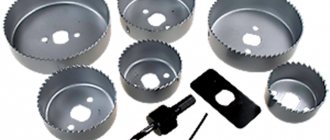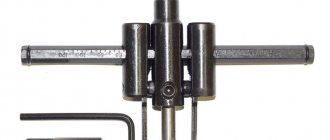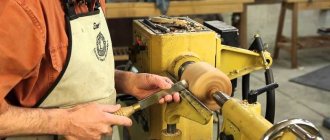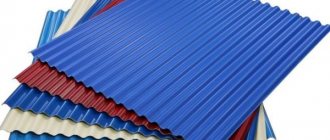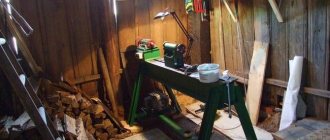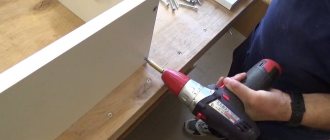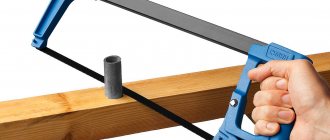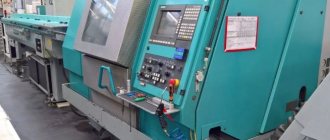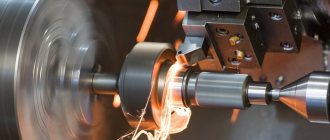Description
A CNC milling machine for metal is a universal equipment with which metal workpieces are processed. The working tool in such machines is a milling cutter, which rotates when the electric motor operates.
The design of this equipment includes several elements:
- The bed is the structure on which all other parts are attached. The base must be monolithic to prevent deviations during operation and soften engine vibration.
- CNC. A system that runs a program that controls the machine's mechanisms.
- Guides. Responsible for moving the cutter and work table.
- Desktop. Designed for placing the workpiece and its further positioning on the equipment.
- Engine. Responsible for the operation of the cutter.
This is a standard device and complete set of milling equipment. Clamps, fasteners, and protective covers can be added to it.
Features of the CNC milling machine
A CNC milling machine is a device that allows you to quickly and efficiently produce any workpieces with complex shapes from any solid materials - wood, metals, plastic, etc. CNC equipment greatly simplifies the process of processing products, reducing the need for manual labor to a minimum.
Such a machine can perform the following functions:
- Milling.
- Turning according to specified parameters.
- Boring of parts.
- Countersinking.
- Grinding.
- Engraving.
Computer programs developed for machine tools completely control the process - from monitoring the movements of the processing spindle to turning on or off the cooling system if necessary.
The CNC milling machine has the following design features:
- The presence of a frame, which is designed for fastening all mechanical components and systems of the device.
- A desktop that can move in two directions - left/right and forward/backward.
- Remote Control. It is mounted on a special bracket and in most machines can be moved to the most convenient place for the operator.
- Spindle. This part is necessary to ensure high-quality clamping of the knife and give it rotation.
- The column on which the spindle is attached. Can move in up/down direction.
- Protective covers. Required in order to make the process of working on the machine as safe as possible. They are designed to protect the operator from chips and coolant that enter the work area under pressure.
- Door. Designed to provide access to the working area of the machine.
- Drum instrument store. The change of knives occurs at the command of the control software.
Data input devices
Designed for the operator to enter parameters of the product processing program on a milling machine.
The most popular input devices are:
- Punched tape reader.
- Magnetic tape reader.
- Personal Computer.
All of them operate via an RS-232-C format port.
Machine control unit
This is the heart of CNC devices. It is with the help of this node that all control of the device is carried out. Control unit functions:
- Reading and processing instructions entered by the operator.
- Decoding codes.
- Interpolation (can be linear, circular or spiral). Required to generate movement of the machine axes.
- Transmission of axis control commands.
- Receiving and processing feedback signals about the position and speed of the axes.
- Control of additional functions - turning on and off the cooling system of the device, changing the cutting tool, spindle, etc.
IMPORTANT! The control subsystem is the central part of the entire machine. It is designed to interact with an operator who controls the processing and reading of control programs.
Control systems can be of two types:
- Closed, that is, having their own algorithms and work cycles, the specifics of which manufacturers do not disseminate information about. They are characterized by increased reliability.
- Open. The software of such devices largely replicates the software installed on any personal computer. Their advantages are the availability and low cost of electronic components, most of which can be found in any computer store.
The most high-tech machines are equipped with a CAM system, which allows you to fully automate the process of writing control programs directly on the machine. Prominent representatives of such machines are the CNC systems of the MAPPS IV series of Japanese Mori Seiki machines. With their help, operators can not only create a program of any level of complexity, but also conduct a full test of it.
Actuating mechanism
The actuator of the machine includes a movable work table and a spindle. The machine table is controlled by the movements of the X and Y axes, and the spindle is controlled by the Z axis.
The drive subsystem in this case includes a set of motors and screw gears that serve to execute commands coming from the control subsystem - moving the executive bodies of the machine along given axes.
Lead screws are important components of the actuator subsystem. Compared to manually controlled machines, they are characterized by higher accuracy, which allows minimizing the friction that occurs during the movement of the executive body and virtually eliminating the occurrence of backlash. Eliminating backlash is extremely important for the operation of the machine, as this allows for ultra-precise positioning in space and high-quality down-milling.
Engines are the second component of the subsystem. The design features of the device include the presence of stepper motors and servomotors.
Stepper motors are designed to convert electrical signals into discrete mechanical movement.
Drive system
Includes:
- Amplifier circuits.
- Drive motors.
- Ball screw bearing.
The control unit transmits signals to the amplifier circuits about the required speed of movement of the axes and the position of the working surfaces. The correction signals are then amplified and actuate the drive motors, which transmit force to a ball screw bearing that adjusts the position of the work surface of the table.
Feedback system
Its main components are sensors that operate on the principle of a measuring system. They constantly monitor the position and speed of the knife.
The control unit receives these signals and generates new ones based on calculating the difference between the specified and current parameters, adjusting the cutting speed and direction.
IMPORTANT! The main task of the feedback system is to provide the control system with information about the real position of the executive body of the milling machine and the speed at which its motors operate.
Remote Control
It is a display that displays commands, signals and other information from the machine. It is fixed on a bracket and can be moved to a place convenient for the operator.
Diagram of a CNC milling machine
Principle of operation
Various technological operations are performed using milling equipment. First of all, the workpiece is fixed on the work table. After starting the cutter, it removes the surface layer of metal from the part. According to a given command, the mechanism gives the workpiece the desired shape. CNC drilling machines are often used in production. With their help, you can create holes of various diameters in metal parts.
Industrial equipment is powerful and capable of performing many tasks. Metal desktop machines are inferior in functionality and power to industrial ones, but take up less space and are much cheaper.
GCC Jaguar offer
Recently, equipment manufactured under the GCC Jaguar brand has become very popular. A well-known company produces a wide variety of machines:
- For working with wood and metal of various types.
- Universal versions designed for milling and other operations, as well as engraving.
- Electroerosive type machines.
- Equipment for milling and turning group.
The company is characterized by producing the highest quality software product that can realize the potential of machine tools.
GCC Jaguar products are characterized by the following qualities:
- High reliability.
- Build quality is at the highest level.
- Application of the most advanced technologies.
- High processing accuracy.
- It is possible to synchronize machines with computers.
In conclusion, we note that with the advent of three-dimensional modeling programs, CNC machines have become very widespread. This is due to the fact that the numerical control unit can move work units taking into account three-dimensional space.
Requirements for control systems
Industrial and desktop CNC routers must meet certain requirements. They must work with common modeling programs (DeskProto, VCarve Pro, ArtCAM, Mach3 and others). Control should be clear and accessible to the technician working on the device. There must be a mechanical adjustment of the device when the computer fails.
Master working on a machine
Stage III - start of processing on the machine
Industrial machines are supplied complete with a special computer. A program is installed on it to control the electric motors of the machine and perform movements based on G-code from the CAM system.
The task is to get the part on the machine
The solution is to run the machining program on the machine
Budget machines are connected to a personal computer. A simple program for a CNC machine is installed on the computer - Mach3, LinuxCNC or other programs. Definitely the best program for a CNC machine is the one that was installed on it!
To obtain the program for CNC machines, follow the links: Mach3 LinuxCNC
Varieties
There are various devices for milling: CNC sheet metal bending machines, CNC metal drilling machines, equipment for changing the shape of the workpiece. Depending on the selected device, you can perform bending, drilling or milling. Equipment is divided into two types:
- Specialized. Used for processing workpieces of one type. Reconfiguration of such equipment is not provided.
- Universal. With the help of such models, you can perform various tasks and process parts in different ways.
They can also be divided by power, type of material processed and size.
How to choose the right milling machine
You should choose a CNC-equipped milling machine not based on an advertising video, but based on the functionality of such equipment and its technical characteristics. In these situations it is necessary to be guided by the following criteria:
- the type of machine that is needed to perform certain tasks;
- advantages and disadvantages of certain models;
- desktop dimensions;
- the presence in the design of a T-shaped groove, which facilitates more convenient fastening of the workpiece;
- voltage required to operate a CNC machine;
- functionality;
- category: desktop, mini or professional;
- warranty provided by the manufacturer.
And, of course, you can also watch a video from the manufacturer for the selected equipment, which will give you the opportunity to understand what characteristics it has. You should not choose a CNC machine that can perform functions that you will never need.
Selection principles
There are a variety of CNC metal milling machines. To avoid mistakes when choosing, you cannot completely trust beautiful advertising. It is necessary to pay attention to a number of features:
- Understand the categories of professional and amateur equipment.
- Consider the dimensions of the device depending on the free space in the room.
- Explore additional features and functionality of the equipment.
- Find out in advance what kind of power is needed for the operation of moving elements.
- Take into account the material from which the frame and fastening elements are made.
The motor power is selected depending on the materials being processed. For hard wood and metal, a powerful electric motor is required. High cost is not an indicator of quality.
Cutting aluminum and how to get good results
Balance: A metal milling machine with a high feed rate and a very shallow depth per pass allows for good cooling of the cutter. It will pass through the aluminum alloy workpiece quickly enough to cool itself, but if the tool lingers too long (slow feed and deep depth per pass) in the same place, it will heat up and melt the cut on the workpiece due to friction. Keep in mind that almost any type of CNC router can successfully cut aluminum.
Consider this analogy: an adult can dig a hole quite quickly and shovel large amounts of sand at a time. A child can dig sand too, but only scratch the surface over and over again, and not take a full shovel. A child will eventually reach the same depth as an adult, but it will take a little longer.
Problem: A child does not use a shovel most effectively because the sharp tip of the shovel will dull faster than the top of the shovel, whereas an adult will work evenly with the entire shovel. The same is true with end mills. The deeper you can go through the workpiece with a router bit, the more evenly it will wear, extending its life.
So, what parameters must be met? This is an important question, because the result can cost a pretty penny. We have a good example. As already written above, a compact CNC metal milling machine and a vortex system are used to blow air through the cutter at a temperature of -50 degrees. The material being cut is grade 6061, which is a structural grade of aluminum, and its thickness is 5 mm, but it does not matter, since the cutting is carried out with a large number of passes. The thicker the material, the longer it will take to process, however, this is already clear.
A Chinese spindle with a speed of 13,000 rpm is used for cutting. The feed rate (the speed at which the end mill moves through the cut) is set between 300 and 430 mm/min. Depth per pass is an important parameter that should be selected carefully. Onsrud, which has extensive experience in the production of face mills, recommends that the depth per pass be 1/2 the diameter of the cutter's cutting part. For a 3 mm end mill, this is about 1.5 mm, but for finishing it is still better to take a depth equal to a quarter of the diameter of the cutting tool.
In end mills, plunging is usually the most damaging to the tool, so a slow speed of penetration into the workpiece is preferred. Typically, for aluminum, the immersion speed is set to 150 mm/min. If you plan to dive to great depths, then it is better to pre-drill a hole in this place using a drilling machine. When diving into the beginning of a profile, it is best to go to the material first (giving the cutter a horizontal movement as the z-axis goes down or up).
When cutting metal, vibration of the workpiece is the main problem that needs to be eliminated. At home, you can use a variety of fixation methods, ranging from clamps to a special vacuum table. No matter what clamping or clamping method is used, make sure that it will not move at all and that the clamp (screws, clamp) is as close to the cut as possible.
Advantages
Compared to conventional machines, CNC equipment has certain advantages:
- Labor productivity increases up to 8 times.
- High precision of the work performed. Even a miniature CNC machine will perform more accurately than a mechanically adjusted industrial machine.
- Quick reconfiguration to perform available functions.
- The number of defects in production is reduced.
In order for a CNC router to function correctly, certain requirements are put forward to the person operating it. He must be able to configure the required requests, correct errors in the computer, and configure mechanisms manually. Without proper management, even expensive equipment will not show good results.
High precision work
The undeniable advantages of CNC
Due to the use of a numerical control unit, the complexity of the design and its cost significantly increase. That is why it is almost impossible to make a wood turning and milling machine with your own hands. The advantages of CNC machines include the following:
- The processing speed increases significantly by approximately 2-3 times. That is why CNC machines are installed in the case of setting up large-scale production. Productivity increases due to the fact that during manual processing the operator spends a lot of time on measurements and other processes.
- The processing accuracy increases. In the manufacture of modern machines that operate under CNC control, high accuracy of positioning of all components relative to each other is maintained. Due to this, the dimensional deviation is only a few fractions of a millimeter.
- The amount of manual work required is minimized. When modernizing production lines or creating new ones, installing CNC machines, the number of service personnel is reduced. One operator will be able to service several machines, thereby significantly reducing the organization’s costs.
- It takes much less time to prepare the workpiece for processing. Modern milling machines can independently change the position of the workpiece along several axes.
As for the shortcomings, there are relatively few of them:
- High price. Due to the installation of a program control unit, the cost of machines increases many times. This is due to the fact that high precision is maintained in the manufacture of the structure, modern technologies and the highest quality materials are used.
- Low-quality equipment produced by some manufacturers cannot be used for milling and performing other operations with the required accuracy.
- Repairs and maintenance may only be carried out by a specialist.
In addition, do not forget that creating a program requires certain knowledge and experience.
Features of working with equipment
Mini metal CNC machines and large machines require operator settings. The responsibilities of the person holding this position include:
- securing workpieces on the work table;
- selection and fixation of the cutter in the chuck;
- setting up and launching the program;
- monitoring the operation of mechanisms and program execution.
Before starting work, the operator must set up the equipment and check how securely the workpiece is secured to the working surface. Before each start of the machine, it is necessary to check the belt tension.
Can I make it myself?
CNC machines are very popular in small workshops. They are used to process wood, metal and plastic. With a lack of funds and a small space, craftsmen are thinking about making equipment with their own hands. This is a feasible idea that will require small investments.
For homemade machines, the working part is an engraver or drill. The frame is assembled from plywood or MDF. It is important to make a stable bed so that the machine does not vibrate during operation. The guides are made of metal. For this you can use furniture profiles. Also, before starting, you need to check the reliability of the connecting elements.
A CNC milling machine is an indispensable equipment in large enterprises. With its help, various works on processing metal, wood, and plastic are performed. If you configure the program correctly, you can significantly speed up the production process and the quality of finished parts.
